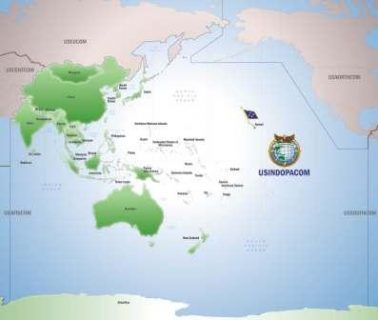U.S. Indo-Pacific Command welcomes new commanding officer
By: Alfred Acenas
(EBC Hawaii-Pacific
PEARL HARBOR (Eagle News) — The U.S. Indo-Pacific Command has a new commander.
Navy Admiral John Aquilino became the 26th Commander Friday, relieving Admiral Phil Davidson who had served at the helm for nearly three years.
Aquilino, who was previously the U.S. Pacific Fleet commander, acknowledged the Indo-Pacific Command’s critical role in providing regional peace and security.
“The Indo-Pacific is the most consequential region for America’s future, hosts our greatest security challenge, and remains the priority theater for the United States,” said Aquilino. “We will compete to achieve our national interests, cooperate where we can, and confront where we must to ensure we maintain a free and open Indo-Pacific.”
As commander, Aquilino is charged with leading more than 380,000 soldiers, sailors, Marines, airmen, guardians, Coast Guardsmen and Department of Defense civilians.
He is responsible for all U.S. military activities in the Indo-Pacific Region, which includes 36 nations, 14 time zones, and more than 50 percent of the world’s population.
Ideological challenge
Outgoing commander Davidson says there is a lot at stake in the region.
“The strategic competition in the Indo-Pacific is not between two nations, it is a contest between liberty, the fundamental idea behind a free and open Indo-Pacific – and authoritarianism, and the absence of liberty,” said Davidson. “The United States has always demonstrated a willingness to stand up for, to defend, and to put our lives on the line in the name of liberty.”
“We have spent much of our time at INDOPACOM focused on strengthening our alliances and enhancing our emerging partnerships across the Indo-Pacific region,” the outgoing commander noted as he thanked fellow service members and counterparts from partner nations. “The United States is deeply committed to advancing and expanding these vital relationships further to help promote our collective peace and prosperity while enhancing security and stability in the Indo-Pacific.”
Indo-Pacific Command well equipped for future challenges
Defense Secretary Lloyd J. Austin III, who presided over the change of command ceremony, praised Davidson’s tenure as the Indo-Pacific commander and his more than 38 years of military service.
“Admiral Davidson has done the nation a great service with his focus on deterrence in the region and the investments he’s made in our network of allies and partners,” said Austin. “The Indo-Pacific Command is better prepared, better trained, and better equipped today than it ever was.“
Austin adds today’s rapidly changing environment is going to demand new thinking and action from the Defense Department to create an integrated deterrent across all realms of potential conflict.
“Throughout American history, deterrence has meant fixing a basic truth within the minds of our potential foes, and that truth is the costs and risks of aggression are out of line with any conceivable benefit,” Austin explained. “To make that clear today, we’ll use existing capabilities, and build new ones, and use all of them in networked ways—hand in hand with our allies and partners.”
Austin also addressed the many challenges facing the region and expressed confidence in Aquilino’s leadership to address those challenges.
“Your new commander knows the stakes, he knows the people, and he knows the challenges,” said Austin. “Admiral Aquilino, you are the right leader at the right time.”
(Eagle News Service)

